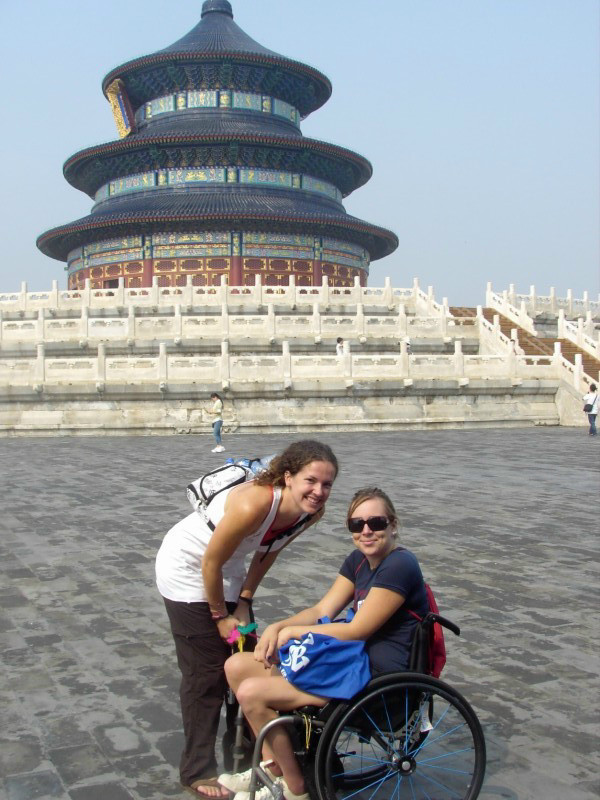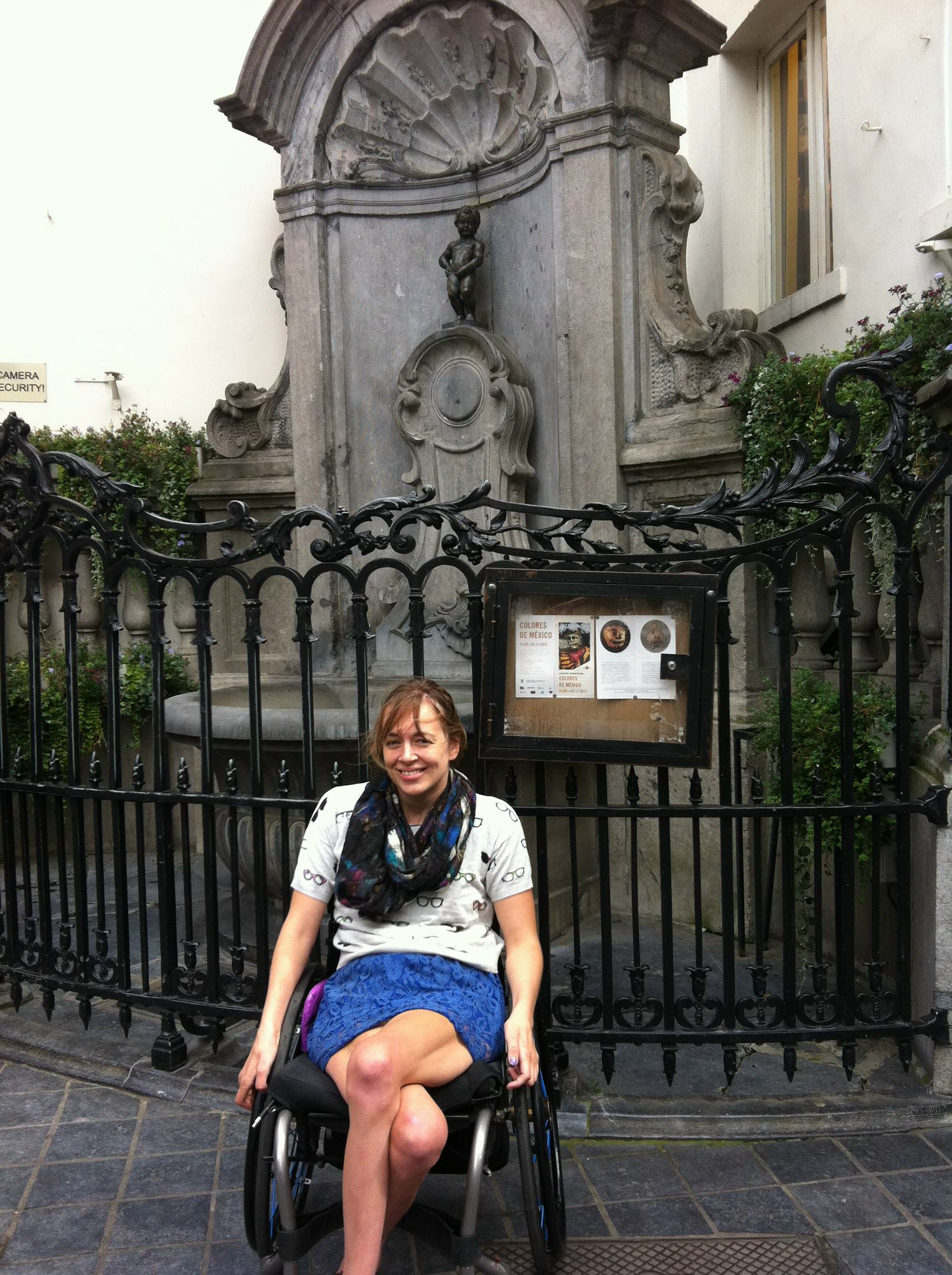The Ups & Downs of Flying with a Wheelchair
- info2344114
- Dec 6, 2016
- 4 min read
6 Tips for Traveling
My family had rarely traveled before my daughter Beth’s C6-7 spinal cord injury. From our small hometown in Ohio, she had been on a plane once, to Orlando, Florida. Beth was a fourteen-year-old inpatient in rehab during the summer of 2000. She ordered a manual instead of a power wheelchair, even though she could hardly push one. With no thoughts of travel, she had no way of knowing that her new chair would simplify the many flights in her future.
TIP #1: Fly with a manual wheelchair instead of a power chair, if at all possible. Power chairs are more vulnerable to significant damage, and may not work after a trip to the cargo hold, even if you remove the battery ahead of time.
Two years after Beth’s injury, I planned our first trip with a wheelchair after she met a Paralympic coach on a serendipity day. I focused on registering her for the USA Swimming Disability Championships while she finished 10th grade. I was clueless, completely unaware of the details of traveling with a wheelchair.
TIP #2: Always plan ahead. Consult with your airline, seek out experienced travelers, and access online resources. Ask a doctor about any medical concerns.
Our flight to Seattle left from Detroit. I transferred Beth to an airport wheelchair, and innocently handed over her manual chair at check in. At the gate, the narrow aisle chair that carried her on the plane surprised us. I helped with transfers and tamed her leg spasms that followed. There were three seats together in our row. With my daughter on the aisle, the window seat passenger had to crawl over Beth before I followed him to sit in the middle. Her wheelchair survived under the luggage pile with only a bent brake lever, a stroke of luck. A year after Seattle, Beth was invited to Edmonton, Alberta with the U.S. Paralympic National Swim Team. At the airport, she wheeled her own chair to the gate. We left the side guards on her gate-checked chair and ended up losing one, but she earned her first stamps in her brand-new passport.
TIP #3: Get to the airport gate early to check in with the clerk. Review the boarding process and gate-check the manual wheelchair. Don’t leave anything loose on the chair. Tape the push handles down. (For any damage, fill out the airline’s claim form.)
After graduating from high school, Beth’s first flight on her own took her to the National Youth Leadership Network conference. I carefully packed her suitcase and she carried my list of important phone numbers and a health card in her wallet. “It was my first independent flight,” Beth said. “I’m not sure why, probably just something new and being nervous, but I got teary when Mom left me at security.” Lifted into an aisle chair to board the plane, she asked them to wait while she broke her leg spasms. At home in Ohio, I watched the clock and waited. When the plane landed in Washington, DC, she called me, reclaimed her wheelchair, and made her way to the conference.
TIP #4: Be prepared. Have an emergency plan in place. Pack extra medical supplies. Be ready for flight delays, or an extended time on the plane.
Through her college years, she flew across the country and around the world on the U.S. Paralympic National Swim Team. Beth and I lived in different states, so we sometimes met at an airport in yet another state for swim meets. She often traveled on her own, and getting to the airport was a challenge at first. Accessible taxis worked with early reservations, but after one was late picking her up, she experimented with the subway, friends with cars, and taxis—which rarely stopped for a young woman in a chair. She practiced wheelchair to car transfers.
TIP #5: If you have air-filled wheelchair tires, replace them. Or, pack two spare innertubes and a bicycle pump.
In Montreal for a swim meet, Beth had a flat tire on a Sunday during a snowstorm. Miraculously, I found an open bike shop with the right innertube. She has used foam-filled tires ever since! Beth competed at England’s first Paralympic World Cup in 2005. At the hotel, her bed was too high. She asked another swimmer to put her mattress along the wall. Beth slept on the box springs because she would not ask for help to get into bed. At her next World Cup, two years later at the same hotel, her coach moved the box springs along the wall instead of the mattress. As she traveled overseas more often with U.S. Paralympics, I stayed at home for some of the trips, but I renewed my passport. I needed to know that I could fly to her if she needed me. Thankfully, she didn’t. Nowadays, college and competitive swimming are in the past and Beth continues to fly for her job and for fun. Some of her work trips are short and routine. She wears pants instead of her usual work dresses and skirts to make her independent transfers easier. She packs light with a bag on her chair back and her computer in another on her lap. She carries an electronic health card and my list of important phone numbers. Neither has ever been needed, but she humors me and leaves them in her wallet anyway. Beth takes an Uber sedan to the airport for work trips. She talks the driver through the process. After she gets herself in the backseat, she explains how to take the big wheels off so her chair fits in the trunk. She says thank you with a smile.
TIP #6: Consider a window seat for future flights. But most of all, ENJOY the trip!
Before she boards the plane, Beth removes the side guards and cushion from her chair. From the aisle seat, she scoots over to her window seat. No one climbs over her. After landing, she uses her phone while the other passengers exit. She avoids baggage claim when she can, and wheels outside to a waiting Uber. For Beth’s longer trips, I keep my passport current, just in case. I learn more details during phone calls and visits—and from social media. She posts a picture with her boyfriend at the Eiffel Tower and another with a friendly cat at a winery in France. My frequent flyer has a knack for attracting serendipity. I hope you will, too. Travel on!
More on my blog at: strugglingwithserendipity.com




















































Comments